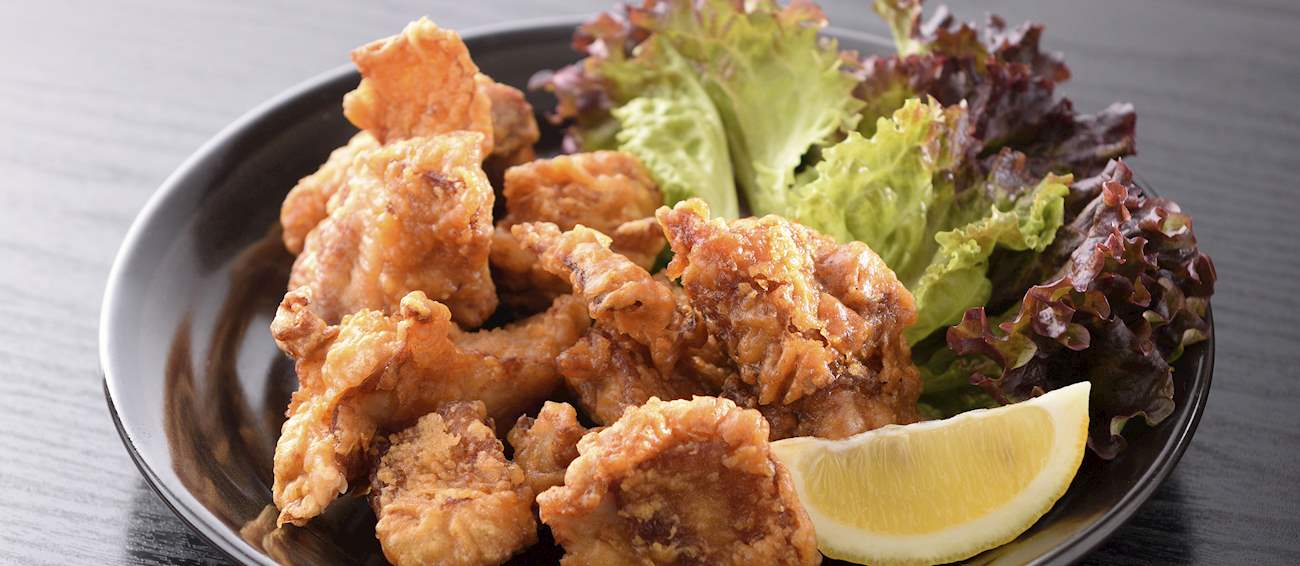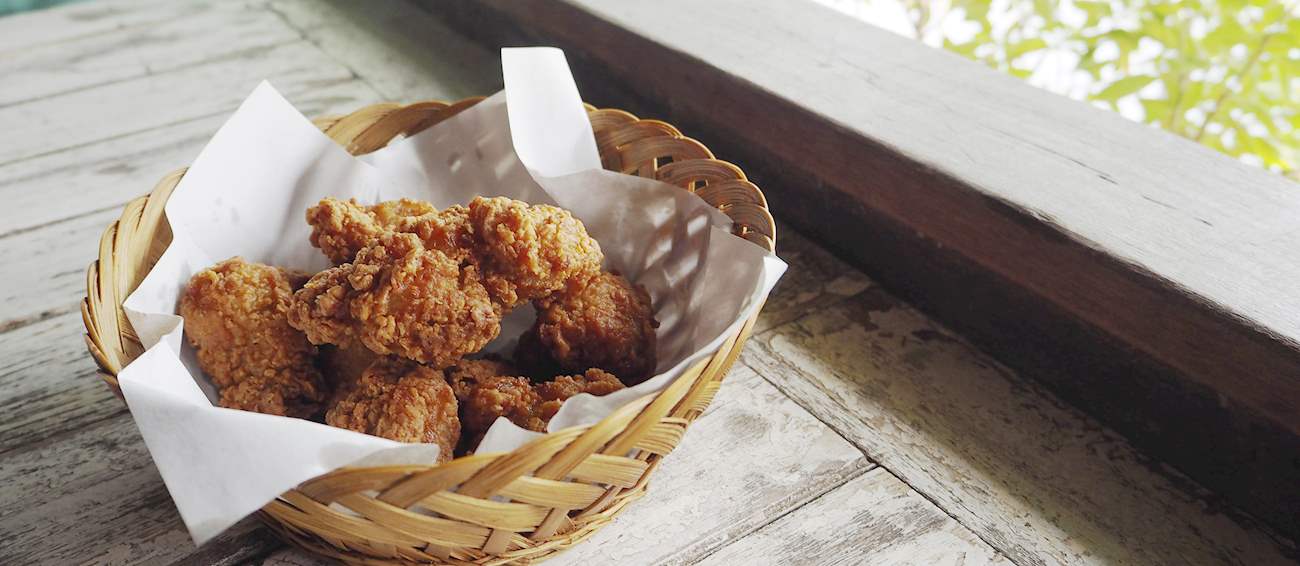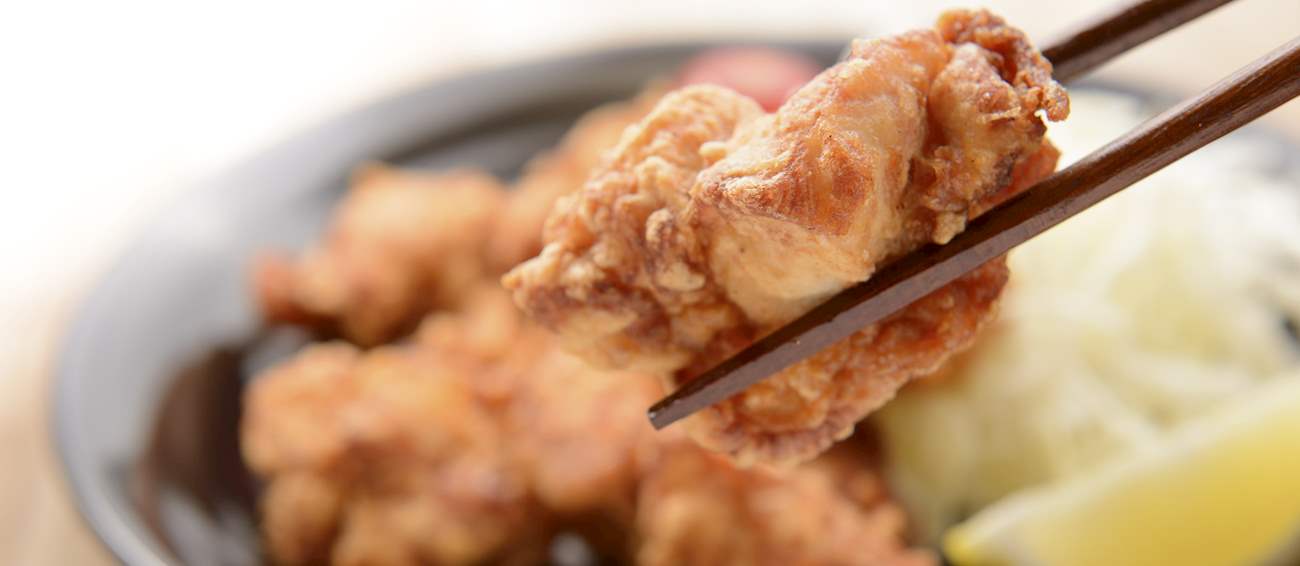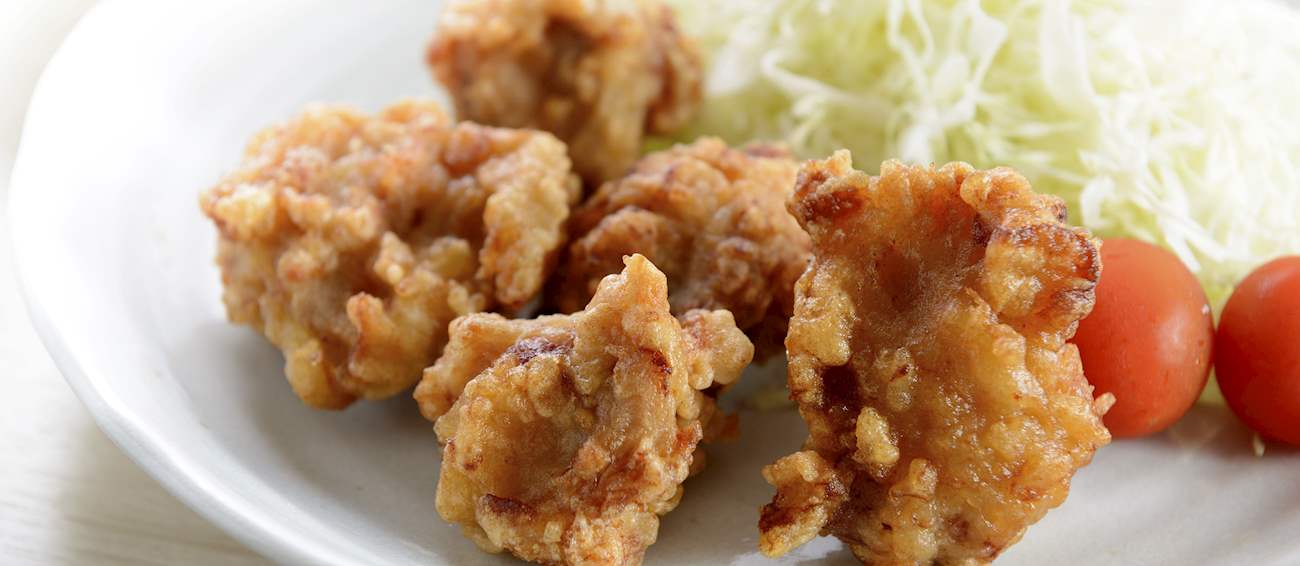Karaage
(唐揚げ, 空揚げ, から揚げ, Dry-Frying)
Also known as dry-frying, karaage is a Japanese cooking technique in which various foods are first lightly coated in arrowroot starch, then deep-fried. The use of arrowroot starch preserves the natural water content of fried foods and produces a crispy outer surface, but alternatively, other coating ingredients such as wheat flour, tapioca, or potato starch can also be used.
Karaage can be used for frying various meats and fish, but it is most often associated with chicken, and involves a special variant called tatsutaage, where pieces of chicken are first marinated in a mixture of sake, soy sauce, and sugar which are then lightly covered with arrowroot starch and deep-fried.
This method makes the meat succulent on the inside and particularly crispy on the outside. If not specified otherwise, karaage usually refers to fried chicken, but apart from chicken, the technique is sometimes used with other ingredients such as askarei (flounder), ika (bits of squid), and gobo (burdock root).
Japanese karaage dishes are usually seasoned with garlic and ginger, and served with soy sauce on the side. They are a staple of informal Japanese gastropubs called izakayas, casual places for after-work drinks and snacks, but they are also available freshly fried as take-out food in numerous supermarkets and convenience stores.
Pairing tips
Highball (Japan)
Haibōru or Japanese highball combines Japanese whisky and soda water, and though it may sound simple, the preparation of this cocktail entails tedious steps that ... Read more
Sake
Sake is the most popular Japanese drink whose first written mention dates back to 3rd century. In its basic form, the drink is made by brewing yeast, koji... Read more
Serve with
Kewpie Mayonnaise
Kewpie is a popular brand of mayonnaise originating from Japan. Enjoyed since 1925, the mayonnaise is made with three main ingredients - oil, rice or apple vinegar, and ... Read more
Jiang you
Used in China for more than 2,500 years, soy sauce is one of the world's oldest condiments, made by fermenting a combination of salt, enzymes, and mashed soybeans. It ... Read more
Karaage Authentic recipe
The following is the traditional recipe for chicken karaage — chunks of deboned chicken thighs are marinated and coated in potato starch, then fried. It was adapted from the reputable blog Just Hungry by Makiko Itoh, a Tokyo-native food & travel writer who runs the popular Japanese food blogs JustHungry.com and JustBento.com and writes a monthly food column for The Japan Times. Additionally, she is the author of the best-selling Just Bento Cookbook... Read more

























